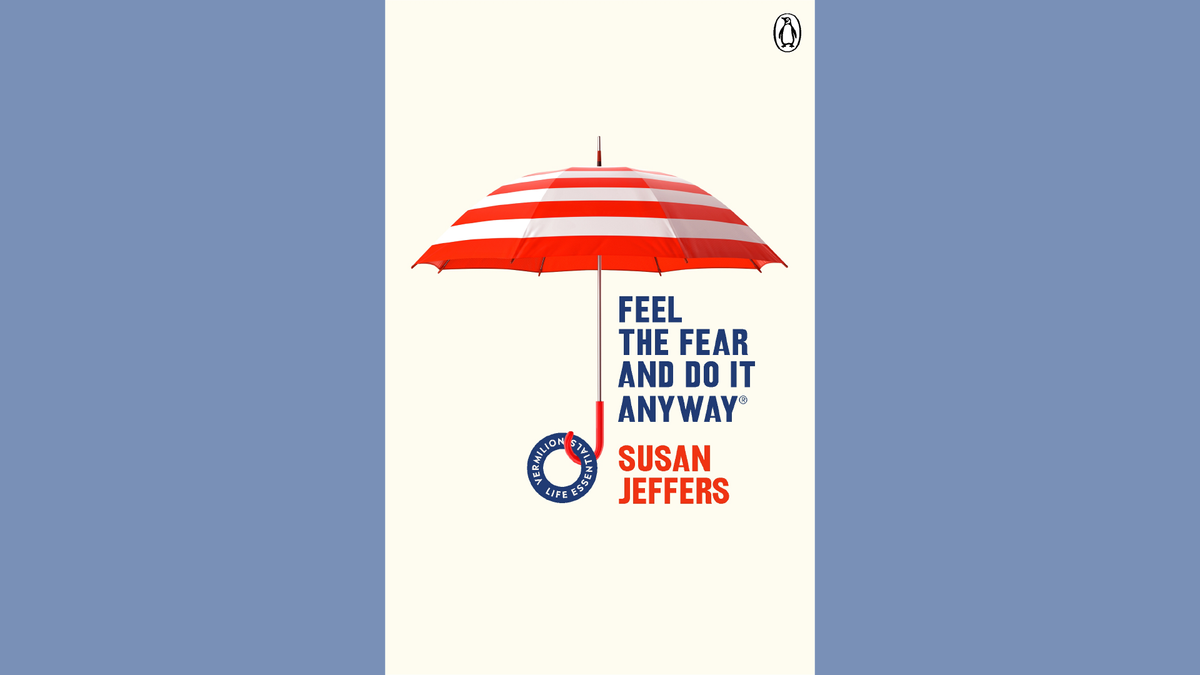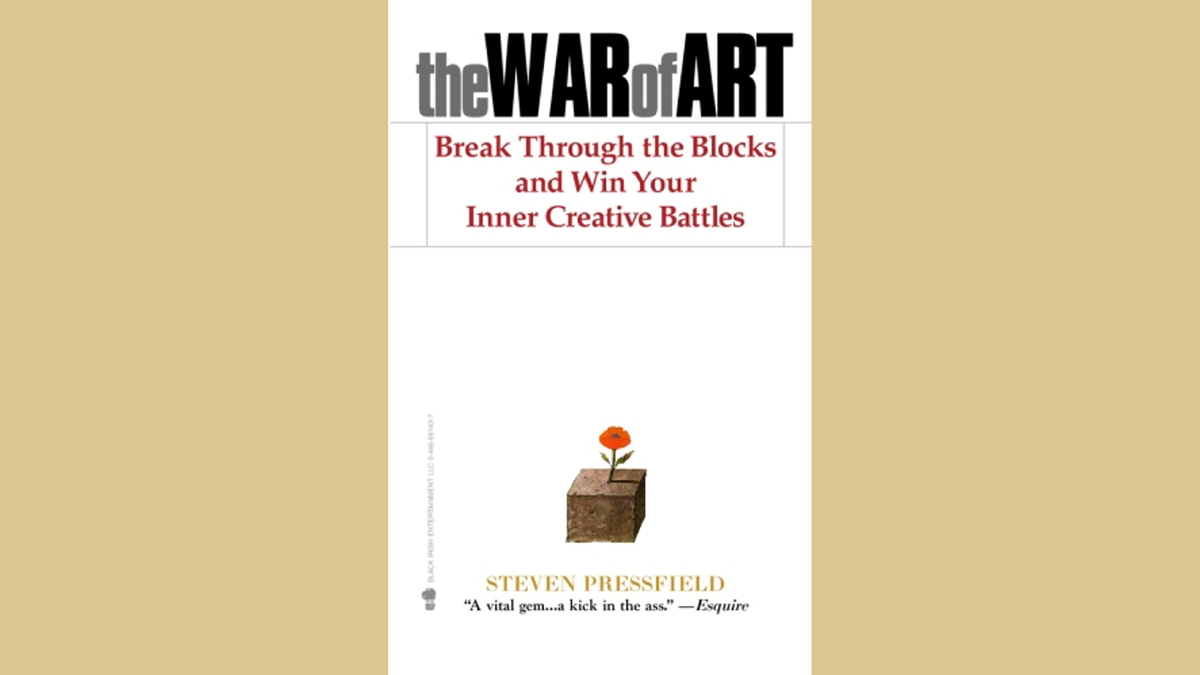Win With Willpower And Start Your Business Now
Step into entrepreneurship with insights from my journey and Sara Blakely’s rise with Spanx. Learn how to face fear, cross the threshold into the unknown, and overcome obstacles with guidance from essential reads like Feel the Fear and The War of Art.

Discover how crossing the threshold into entrepreneurship transforms founders. Learn from my startup journey, Sara Blakely's fearless rise with Spanx, and essential books to guide founders: Feel the Fear and The War of Art.
Every founder has that moment when they cross a line, leaving behind the security of the known for the uncertainty of the unknown. For me, that moment was Crossing the Threshold—a point in my journey that was both thrilling and terrifying. After a decade at McCann and DDB agencies, where I had built a successful career in advertising, I knew deep down that I was destined for something different. I wanted to make, create, and be a part of something bigger than myself.
But, like many aspiring entrepreneurs, fear held me back.
“Fear is often the strongest barrier between the life we know and the life we dream of. But the only way forward is through it.”
The Fear of Letting Go
I spent years flirting with the idea of starting my own company. I’d daydream about it, write business plans in the middle of the night, and wonder what it would be like to forge my path. But when it came down to it, I always retreated to the comfort of my corporate job. Why? Because fear has a way of holding you hostage. Fear of failure, instability, and fear of the unknown kept me tethered to a predictable and safe life.
I finally found the courage to leap when I joined forces with Tom Chi and Matt Dorey. Together, we co-founded Factory SF, and in that moment, I stepped over the threshold. There was no turning back.
“There’s a moment in every founder’s journey when you have to ask yourself: Do I want to play it safe, or do I want to play to win?”
This wasn’t just a career move but a complete shift in how I saw the world. I no longer worked for a company with clear rules, established hierarchies, and predictable outcomes. Now, it was all on me. I had crossed from the realm of comfort into the unknown and was about to discover what the startup world was like.
Fundamental Concepts of “Crossing the Threshold” as a Founder and CEO
Reflecting on that experience, I can see how my journey mirrored the six key “Crossing the Threshold” concepts in the Hero’s Journey.
1. Leaving the Familiar World Behind
The hardest part of this step is the psychological shift—letting go of the safety net. For me, it was leaving behind the structure and security of my corporate job. The advertising world had been comfortable, predictable, and financially stable. But as a founder, I had to let all of that go. Crossing the threshold meant stepping into the unknown with no guarantees of success.
2. Entering the Unknown
Stepping into the startup world was like walking through a door and entering a completely different universe. Suddenly, the systems and rules I was used to apply no longer. I wasn’t playing by anyone else’s rules—I was building my own. In this space, everything felt uncertain, but that uncertainty also brought potential. It’s a place of endless possibility but also risk.
3. Challenges and First Obstacles
The moment I crossed into startup life, the challenges began. Fundraising was one of the first shocks. It was an uphill battle, and I quickly realized that great ideas alone wouldn’t open doors. I also faced people issues, something I hadn’t fully prepared for. Building a team sounds exciting, but managing complex human dynamics is the work. These challenges were my “first tests,” shaping how I would approach every problem moving forward.
4. Trust in Allies and Mentors
I didn’t face these challenges alone, and that’s crucial. As a founder, you must identify the right people to guide you through the early stages. That was my co-founders, Tom and Matt, and other mentors in the startup ecosystem. They provided support, perspective, and advice when I needed it most. Your allies become your lifeline, helping you navigate the most uncertain moments of the journey.
5. No Turning Back
Once I crossed the threshold, there was no retreat. You reach a point where you’re too far in to turn back to your old life. For me, there was no returning to the comfort of my corporate job. I had committed fully to building Factory SF, and now I had to face the challenges head-on. You either push forward or risk getting stuck. This is where genuine commitment kicks in.
6. The Beginning of Transformation
Crossing the threshold wasn’t just about the external journey of building a startup but the internal journey of becoming a leader. The person I was before I became a founder differed from the person I was becoming. The challenges of startup life tested my resilience, forced me to grow, and transformed me from someone with a vision into someone capable of leading a company. The transformation had begun, and there was no returning to who I was.
The Reality Check: First Substantial Challenge
I had romanced the idea of startup life. Silicon Valley would be a playground of innovation, where investors would throw money at a great idea, and success would come quickly. But the reality hit me hard. One of my first challenges was fundraising. Getting investors to buy into our vision wasn’t just a matter of pitching well—it was about building relationships, managing expectations, and repeatedly proving ourselves.
“Startup life isn’t about having a brilliant idea; it’s about how well you can handle the storms that come after.”
On top of that, there were inevitable issues with people. Building a team sounds excellent in theory, but managing human dynamics in high-stress environments is no small feat. The emotional labor of navigating conflicts, fostering collaboration, and maintaining morale was something I hadn’t fully anticipated. This wasn’t just business; it was about people. And people are complicated.
These challenges, while daunting, forced me to grow as a leader. They made me realize that success isn’t about avoiding difficulties but how you respond to them. Resilience became my greatest asset.
Building Habits to Survive and Thrive
Amid these challenges, I learned that thriving as a founder wasn’t just about grinding 24/7. Burnout is real; I knew I needed a system to stay grounded. That’s when I developed a set of daily habits that became my saving grace.
- Exercise: Physical movement became my way of managing stress. Whether running or hitting the gym, exercise gave me a mental break and the energy to face each day’s challenges head-on.
- Deep work: I carved out blocks of uninterrupted time to focus on the most critical tasks. There were no distractions, no multitasking, just concentrated effort. This practice allowed me to push forward, even when the chaos of startup life threatened to pull me in a thousand different directions.
- Reflection and mindfulness: At the start of every day, I reflected on what had happened, what I had learned, and what I needed to improve. This habit not only helped me process stress but also gave me clarity in decision-making. Reflection was my compass, guiding me through the ups and downs of startup life.
“Entrepreneurship isn’t just about pushing harder; it’s about finding balance in the chaos and habits that sustain your strength.”
These habits weren’t just about productivity—they were about survival. They helped me stay balanced, focused, and resilient despite the inevitable obstacles to building a company.
Books to Guide Founders Through “Crossing the Threshold”
As a founder, stepping into the unknown can be both exhilarating and overwhelming. During this pivotal phase, having the right mindset and tools is essential. Here are two books that profoundly impacted me, and I believe they can offer immense value to anyone embarking on their entrepreneurial journey:

1. “Feel the Fear and Do It Anyway” by Dr. Susan Jeffers
Fear is inevitable when crossing the threshold from the familiar into the unknown. Whether it’s the fear of failure, financial instability, or the uncertainty of success, fear can paralyze us as founders. Dr. Susan Jeffers’ book is a lifeline for those grappling with that fear. She introduces five essential truths about fear that every founder should understand:
• The fear will never go away as long as I continue to grow.
• The only way to eliminate the fear of doing something is to go out and do it.
• The only way to feel better about myself is to go out and do it.
• Not only will I experience fear whenever I’m in unfamiliar territory, but so will everyone else.
• Pushing through fear is less frightening than living with the underlying fear that comes from a feeling of helplessness.
These truths helped me navigate the uncertainty of leaving my corporate job and facing the unpredictability of startup life. The message is simple yet powerful: feel the fear and do it anyway. You don’t have to eliminate fear; you must move forward despite it.
For founders, fear is a sign of growth. It means you’re stepping into something bigger than yourself. But instead of letting that fear hold you back, Jeffers’ wisdom helps you use it as fuel to propel you forward. For anyone standing at the threshold, unsure whether to leap, this book will be your guide through the fear.

2. “The War of Art” by Steven Pressfield
Entrepreneurship is a creative endeavor, but with creativity comes resistance, self-doubt, and stress. Steven Pressfield’s “The War of Art” is a call to arms for anyone facing these inner battles. He defines resistance as the enemy of creativity, which keeps us from pursuing our dreams. As a founder, I’ve faced that resistance more times than I can count—whether it was the voice of self-doubt during fundraising or the pressure of building something out of nothing.
Pressfield takes a no-nonsense, warrior-like approach to combating resistance. He encourages us to adopt a warrior’s mindset, one that treats creativity as a battle to be fought daily. This mindset is invaluable for founders. We’re not just building companies—we’re creating something that didn’t exist before. That process will always be met with resistance from internal and external forces. But Pressfield’s words remind us that the fight is worth it and that the only way to succeed is to show up every day and do the work.
For founders, The War of Art is a manual on how to push through obstacles, whether self-imposed (fear, procrastination) or external (setbacks, challenges). It’s about learning to treat every day as an opportunity to face your fears, stress, and the resistance between you and your goals.

Case Study: Sara Blakely – Founder of Spanx
From $5,000 to a Billion-Dollar Empire
Sara Blakely’s entrepreneurial journey epitomizes fearless innovation and the power of thinking differently. In 2000, she founded Spanx with just $5,000 in savings, no formal business background, and no training in fashion. What she did have, though, was a vision and a deep belief in her idea: to revolutionize women’s hosiery. At the time, she was selling fax machines door-to-door, an unglamorous job she had held for seven years, but her discomfort with traditional undergarments sparked an idea that would change her life—and millions of others.
Blakely’s story is so powerful because she faces her fears head-on. She didn’t allow her lack of expertise to hold her back. Her lack of industry experience became her strength, allowing her to think outside the box and develop creative solutions. “What you don’t know can sometimes become your greatest asset,” Blakely once said.
When she cut the feet off a pair of control-top pantyhose to wear under white pants, she didn’t just solve a personal problem—she identified a gap in the market. However, turning that idea into a successful product required courage, resilience, and the ability to push through rejection.
Overcoming Fear: Stepping into the Unknown
Blakely’s story perfectly ties in with the principles of “Feel the Fear and Do It Anyway.” Like many founders, she was terrified of failing. She knew she was stepping into an industry dominated by established players without guaranteed success. But instead of letting that fear hold her back, she used it as motivation.
“I had no idea how the industry worked, but I think that’s why I was able to do it,” Blakely has said. She had to cold-call manufacturers, many of whom were dismissive of her idea. She received rejection after rejection from male-dominated hosiery mills that couldn’t see the potential in a footless pantyhose product. But Blakely didn’t quit. She embodied the idea of feeling the fear and doing it anyway.
When fear crept in, she kept moving forward. Persistence was her most valuable tool. After months of rejection, she finally found a manufacturer willing to take a chance on her. Despite the fear of being turned down, this relentless pursuit separates successful founders from those who give up too early.
Creativity Over Conformity
In many ways, Blakely’s success is also a perfect demonstration of the principles in Steven Pressfield’s “The War of Art.” Pressfield speaks about “resistance”—the internal and external forces that stop us from pursuing our creative ideas. Blakely’s journey exemplifies how resistance can manifest as doubt, fear of rejection, or societal expectations. It can also be overcome by adopting a warrior-like mindset.
Blakely didn’t have traditional industry training or connections, which worked in her favor. She could think creatively and disrupt the industry because she wasn’t bound by the “rules” of how things were done in fashion. She saw the industry norms not as boundaries but as opportunities to innovate. She even invented new marketing techniques when she first brought Spanx to life. She hand-delivered her products to department store buyers. She persuaded them to display her product prominently, convincing stores like Neiman Marcus to take a chance on her footless pantyhose.
Blakely’s resilience went beyond just manufacturing. Without a big marketing budget, she hustled to get Spanx in front of customers. She cold-called Oprah Winfrey’s producers, knowing that if she could get her product in front of Oprah, it would change everything. In 2000, her gamble paid off—Oprah named Spanx one of her “Favorite Things,” which caused the product to become famous.
“Creativity is the key to breaking through resistance. I didn’t follow the rules because I didn’t know what the rules were,” Blakely reflected. Steven Pressfield calls for this in “The War of Art”—to overcome resistance and allow creativity to flow freely, even when the world tells you ‘no.’
Facing Resistance: Battling Self-Doubt and Rejection
Like any founder, Blakely faced enormous internal and external resistance. From manufacturers who didn’t believe in her product to the societal pressure of being a female entrepreneur in a male-dominated industry, she faced challenges on all sides. But perhaps the most significant battle was the internal resistance: the self-doubt, the fears of inadequacy, and the uncertainty of whether her idea would succeed.
Instead of letting these challenges defeat her, Blakely used them as fuel to keep pushing forward. Like the creative warrior in “The War of Art,” she showed up daily, ready to fight for her vision. She once shared, “I was so determined. I promised myself that if no one bought my product, I would keep making it until I was satisfied that it wasn’t working. I just wasn’t going to quit.”
This is the essence of Blakely’s success. She understood that rejection and failure were part of the journey and embraced them as learning opportunities. She didn’t let “no” stop her from achieving her vision.
Sara Blakely’s Legacy: Fearlessness as a Founder
Blakely’s story is the ultimate example of navigating the Crossing the Threshold phase in entrepreneurship. She faced the unknown, battled rejection, and resisted societal pressure to conform. She turned a simple idea—footless pantyhose—into a billion-dollar company through her creativity, determination, and relentless spirit.
Today, Spanx is a household name, and Blakely is celebrated as one of the most successful self-made female billionaires. Her journey shows that facing fear and resistance is part of every founder’s story. Still, those who persist, find creative solutions to obstacles and never stop pushing forward ultimately succeed.
Blakely’s journey relates to the essential lessons of “Feel the Fear and Do It Anyway” and “The War of Art.” She faced the fear of failure but moved forward despite it, and she pushed through resistance by embracing creativity and perseverance. Her story is a beacon of hope for any founder standing at the threshold, uncertain about their next steps.
“Sara Blakely didn’t just revolutionize the hosiery industry—she redefined what it means to be a fearless entrepreneur. Her story reminds us that success comes not from avoiding fear but embracing it and moving forward anyway.”
Cross the Threshold
Entrepreneurship is a journey of fear, resistance, and uncertainty—but it’s also where growth happens. Like Sara Blakely, you don’t need all the answers or experience to start. You need the courage to step forward, embrace the challenges, and use fear to guide you toward your goals.
Remember, the most significant transformation begins at the threshold of the unknown. Will you cross it?
Your Call to Action: Now it’s your turn. What idea have you been holding back from pursuing? The time to act is now. Feel the fear, step into the unknown, and start your journey. Download our free guide to turning your business idea into reality, and let's take that first step together.



